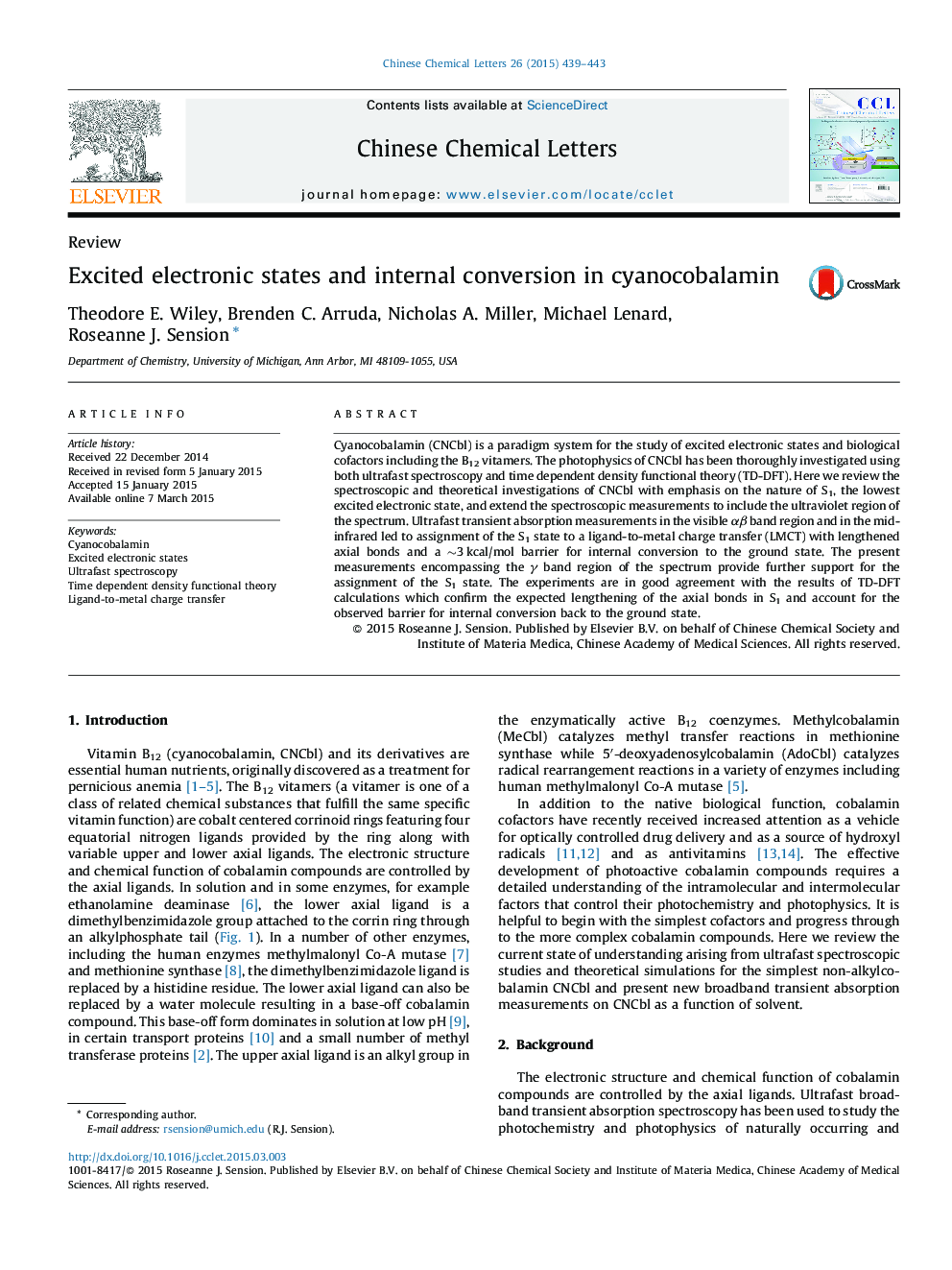| Article ID | Journal | Published Year | Pages | File Type |
|---|---|---|---|---|
| 1254058 | Chinese Chemical Letters | 2015 | 5 Pages |
Cyanocobalamin (CNCbl) is a paradigm system for the study of excited electronic states and biological cofactors including the B12 vitamers. The photophysics of CNCbl has been thoroughly investigated using both ultrafast spectroscopy and time dependent density functional theory (TD-DFT). Here we review the spectroscopic and theoretical investigations of CNCbl with emphasis on the nature of S1, the lowest excited electronic state, and extend the spectroscopic measurements to include the ultraviolet region of the spectrum. Ultrafast transient absorption measurements in the visible αβ band region and in the mid-infrared led to assignment of the S1 state to a ligand-to-metal charge transfer (LMCT) with lengthened axial bonds and a ∼3 kcal/mol barrier for internal conversion to the ground state. The present measurements encompassing the γ band region of the spectrum provide further support for the assignment of the S1 state. The experiments are in good agreement with the results of TD-DFT calculations which confirm the expected lengthening of the axial bonds in S1 and account for the observed barrier for internal conversion back to the ground state.
Graphical abstractBroadband transient absorption spectroscopy of vitamin B12, cyanocobalamin is extended into the UV region of the spectrum. Spectroscopic and theoretical investigations are reviewed and compared to elucidate the nature of the lowest excited electronic states controlling the photochemistry and photophysics.Figure optionsDownload full-size imageDownload as PowerPoint slide
